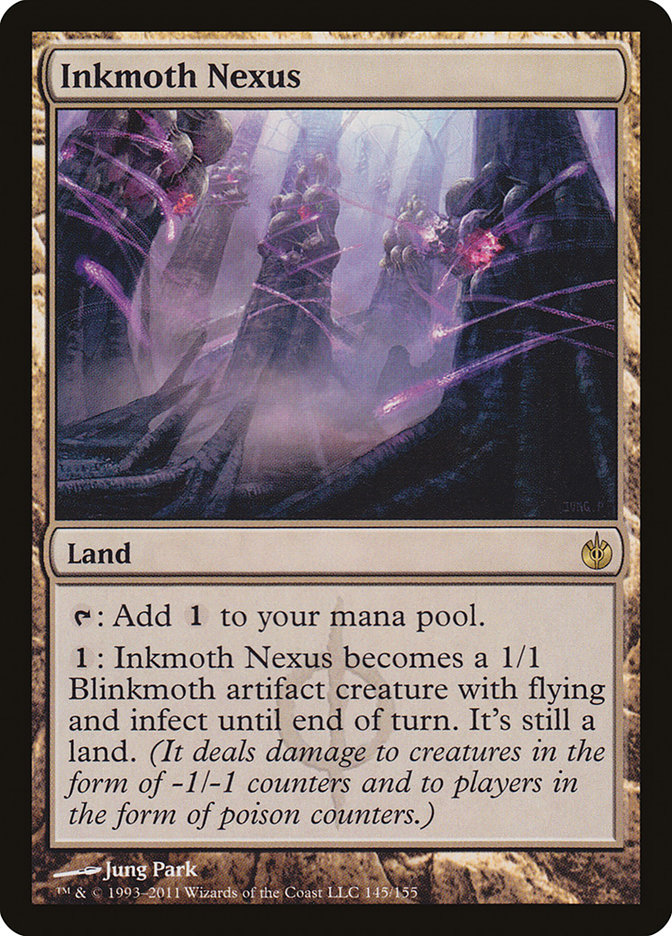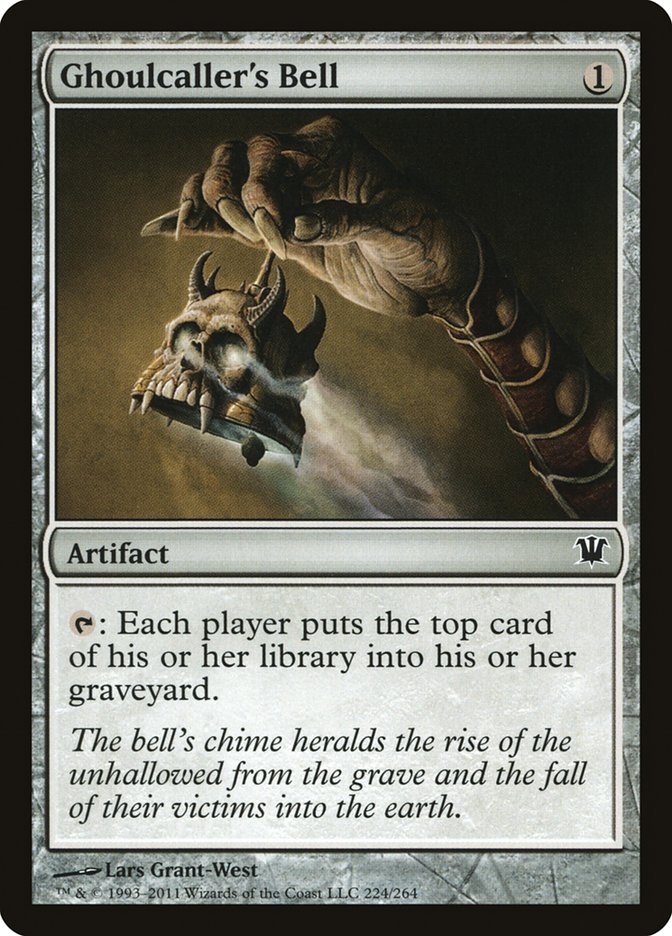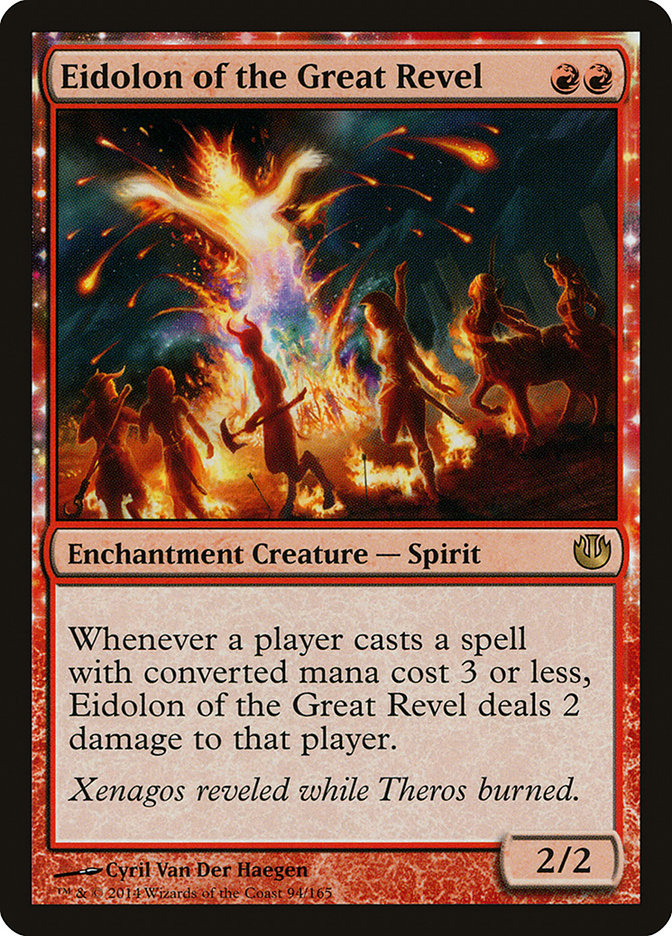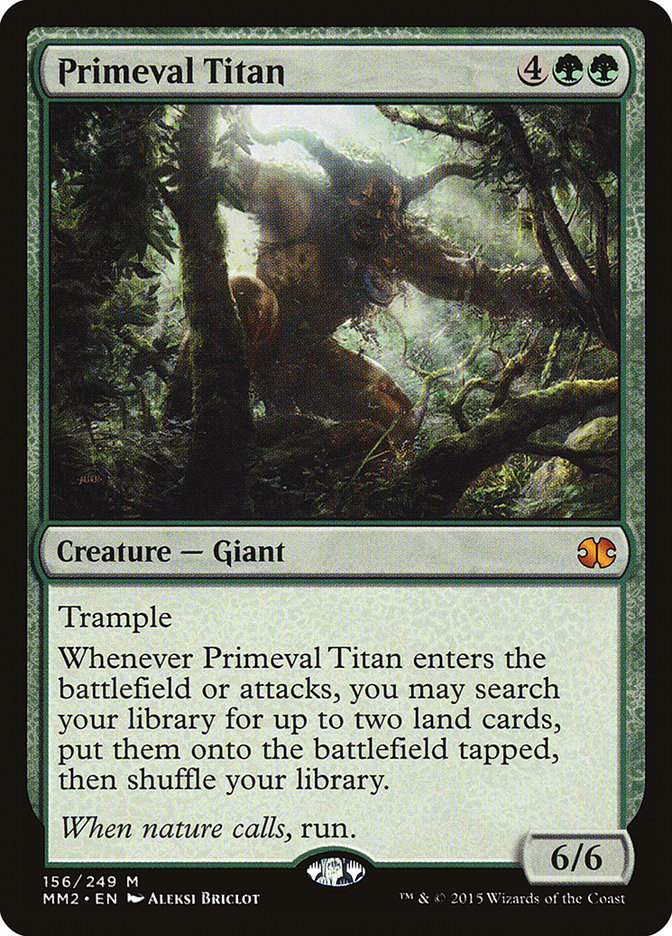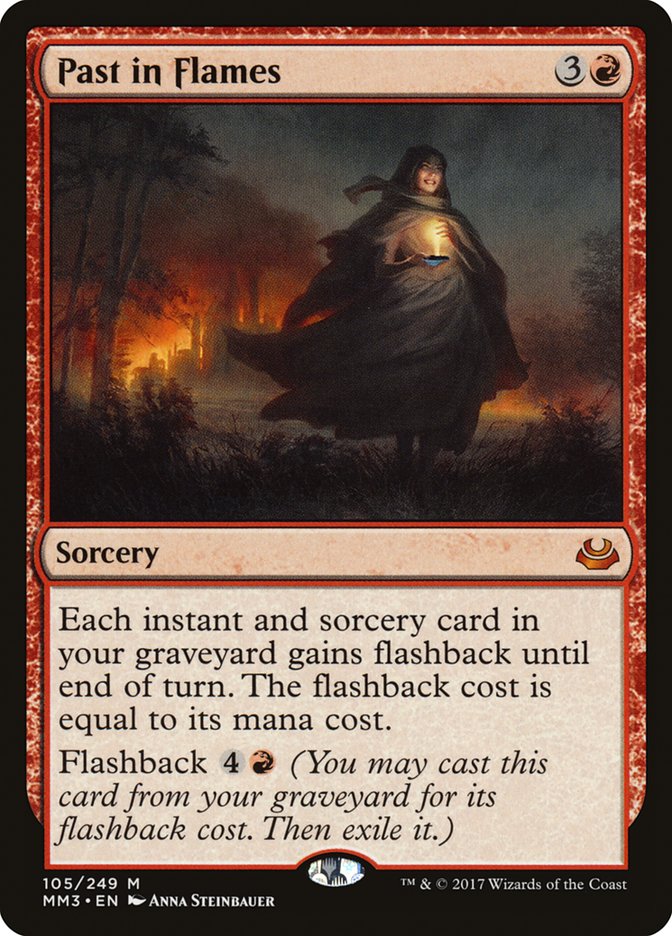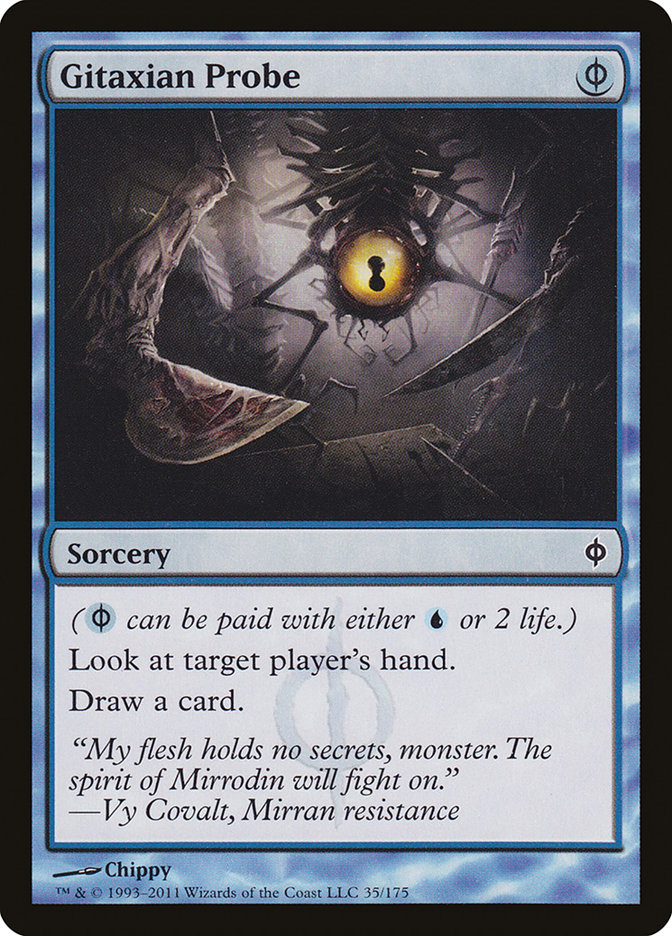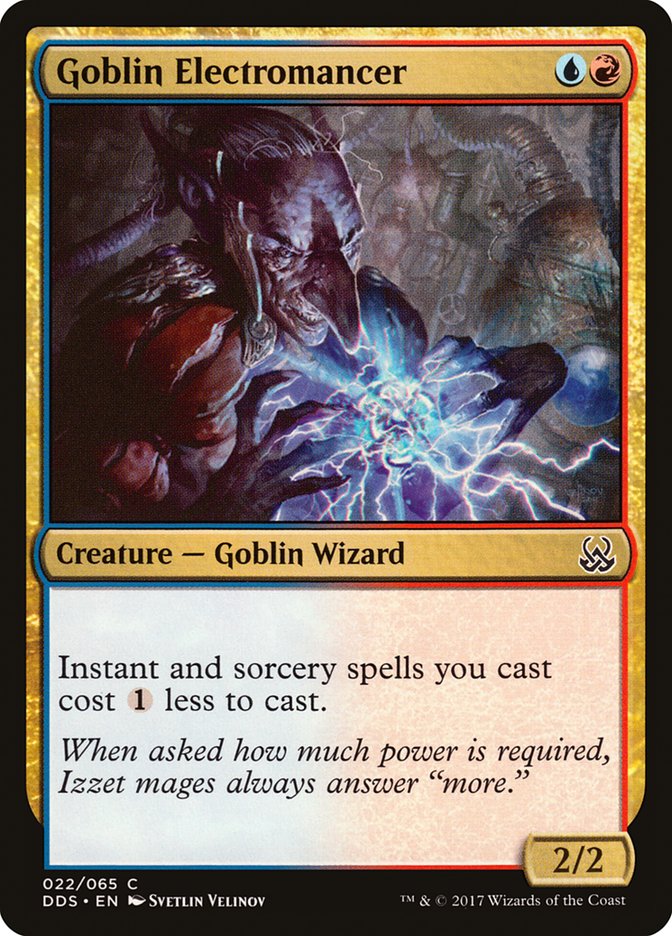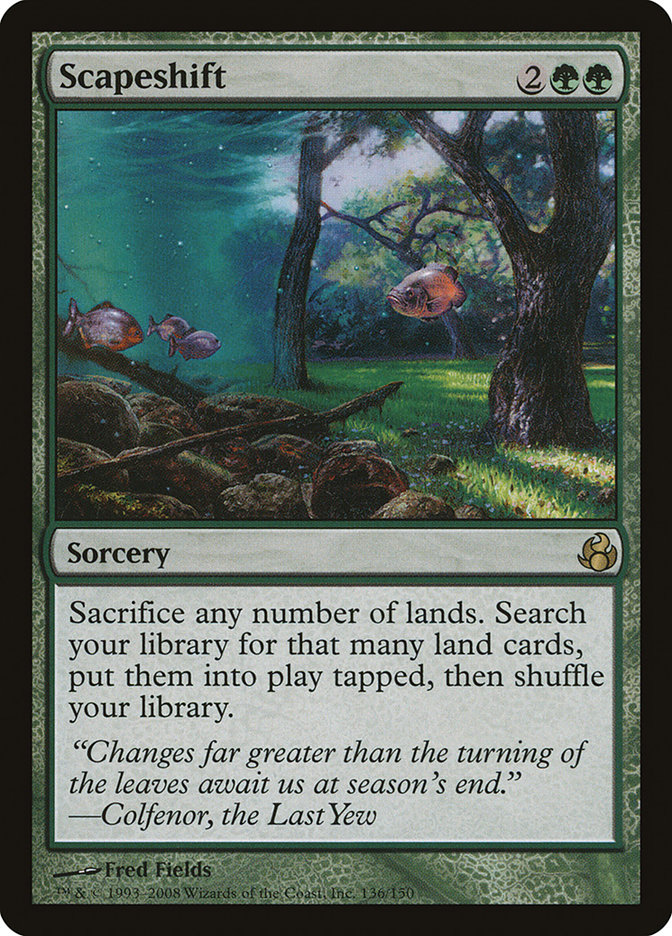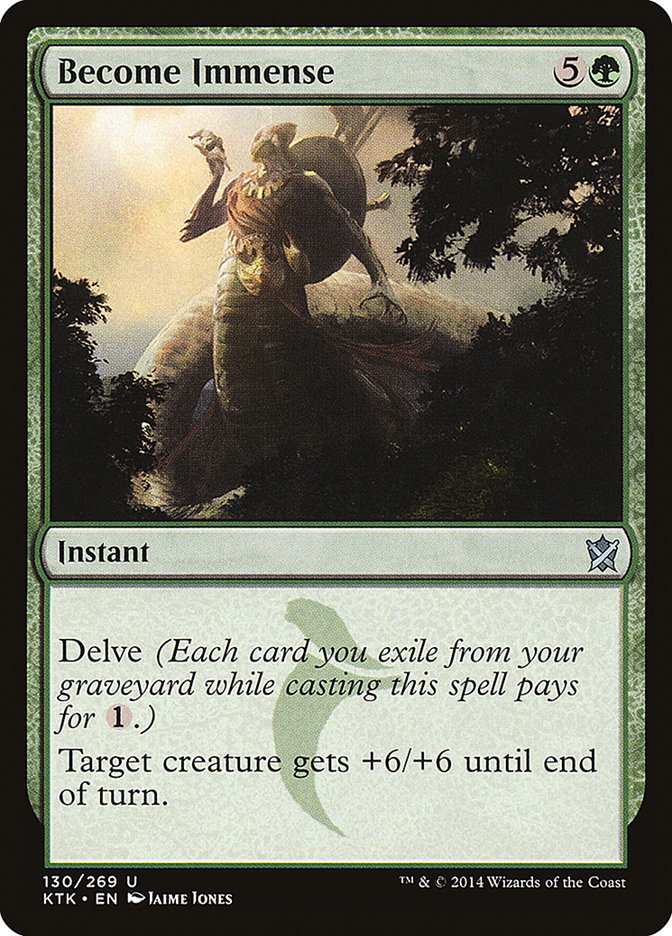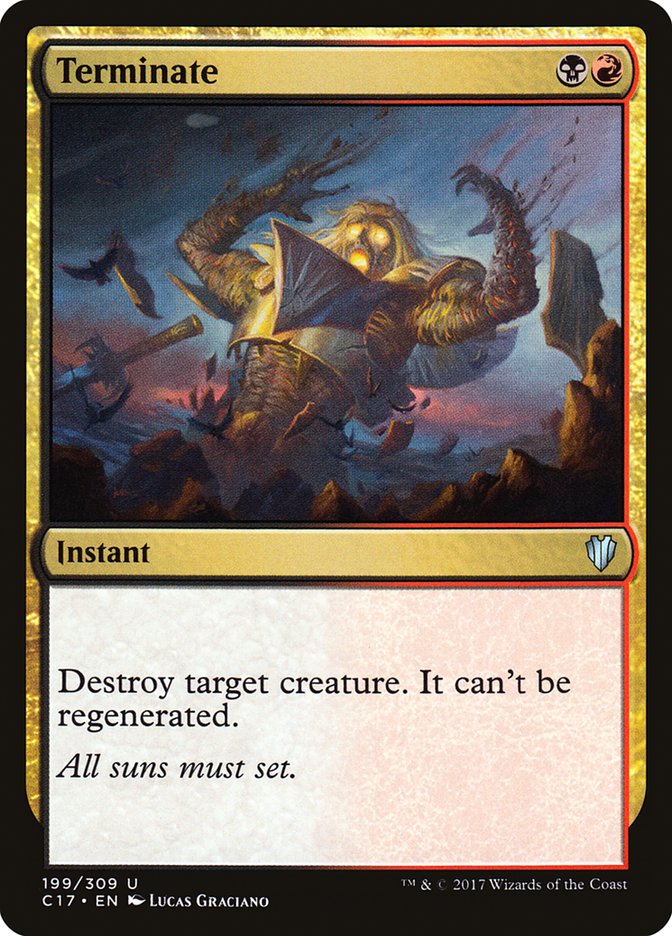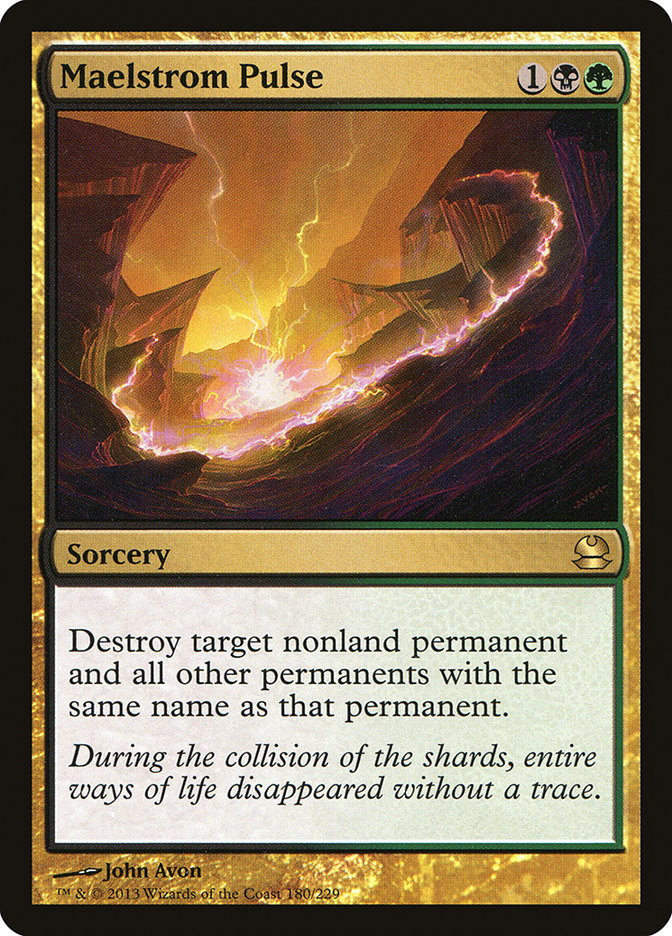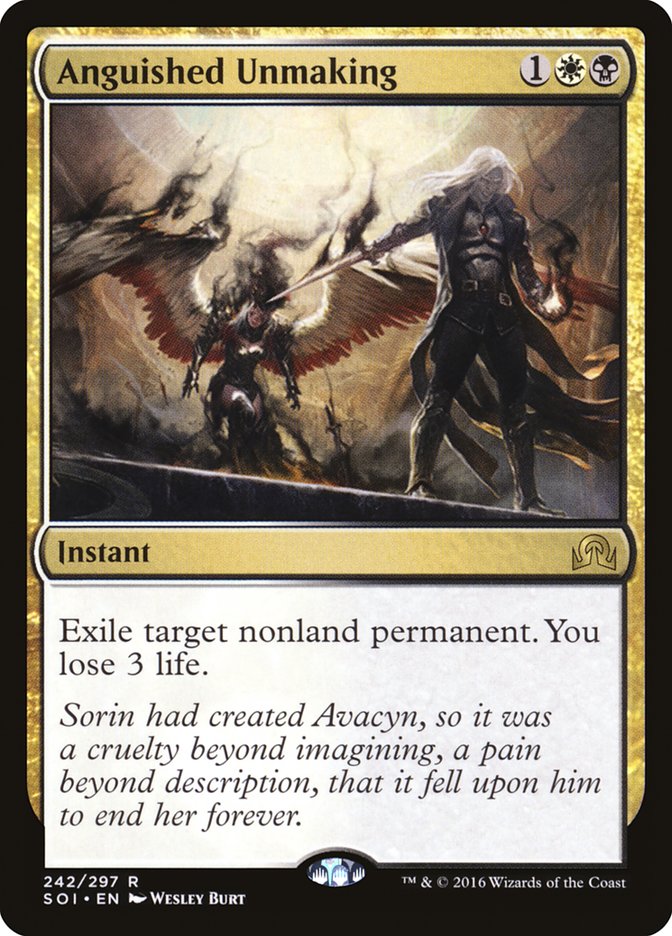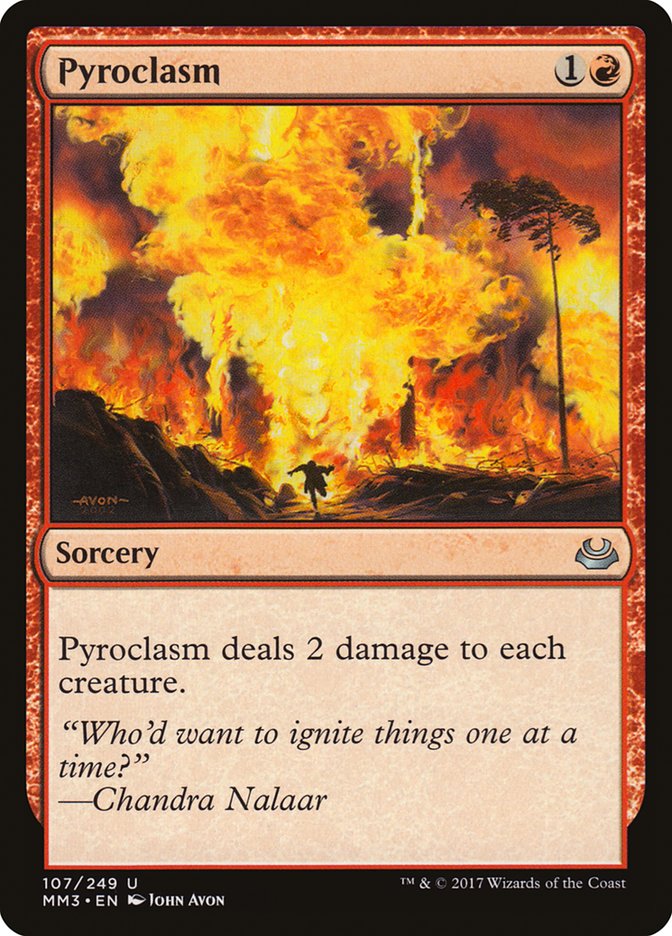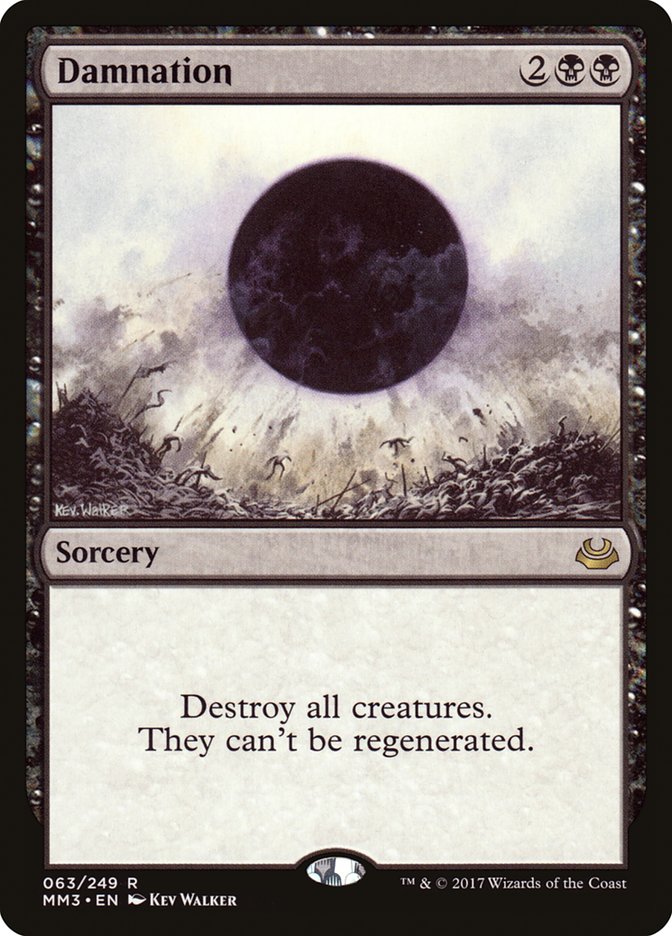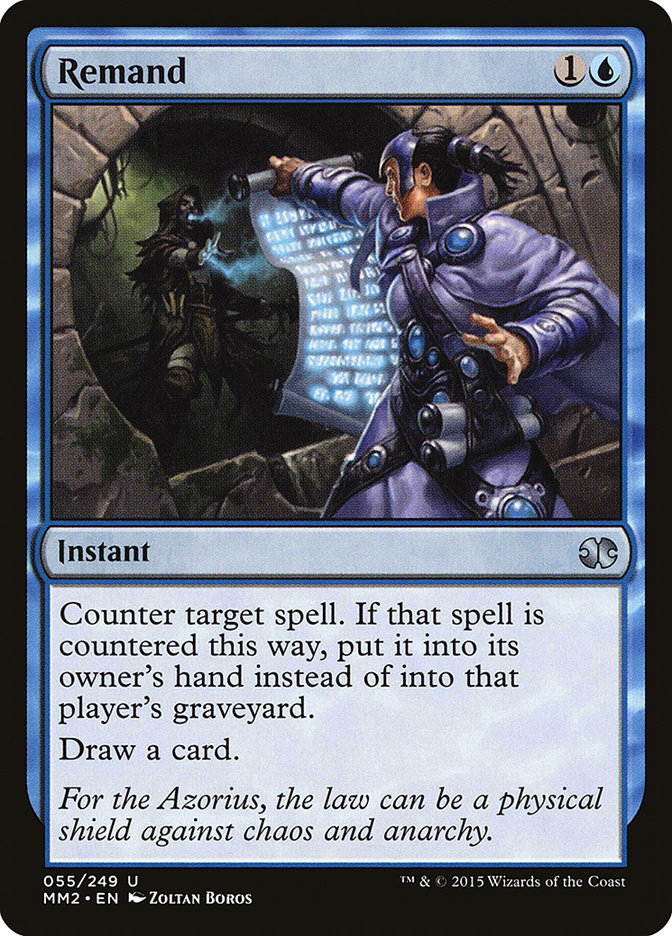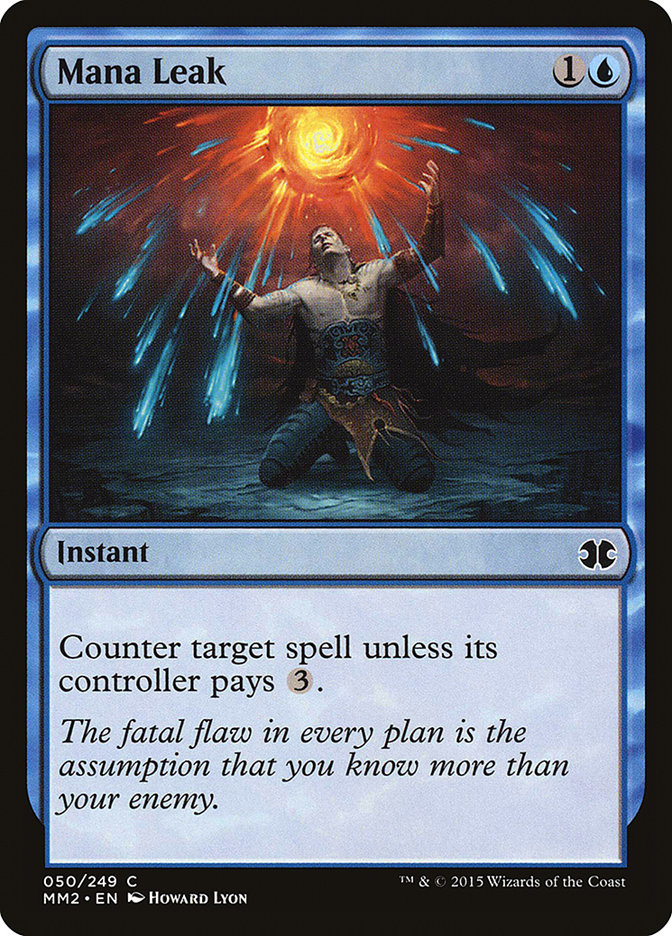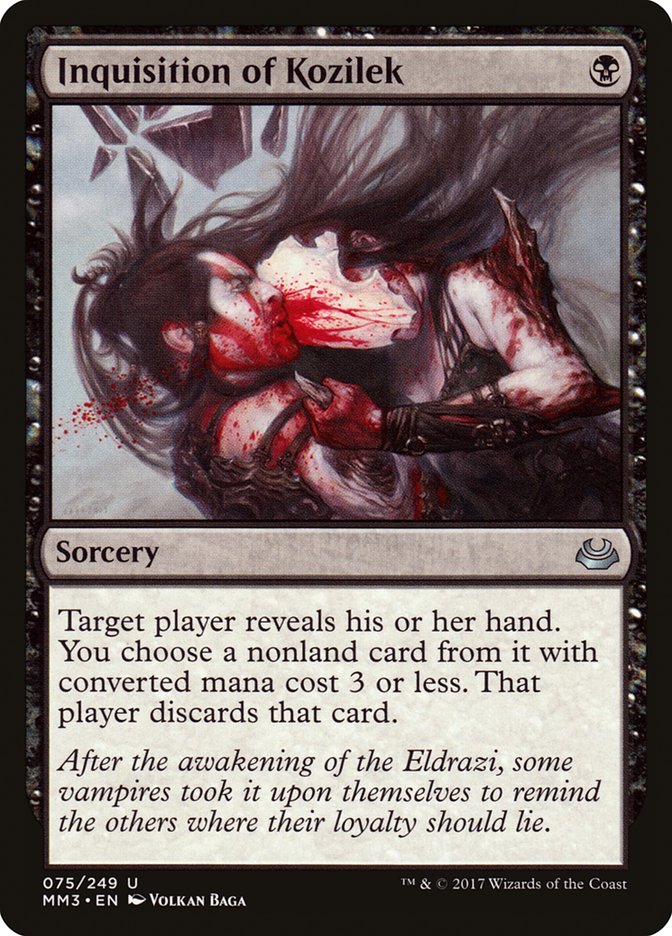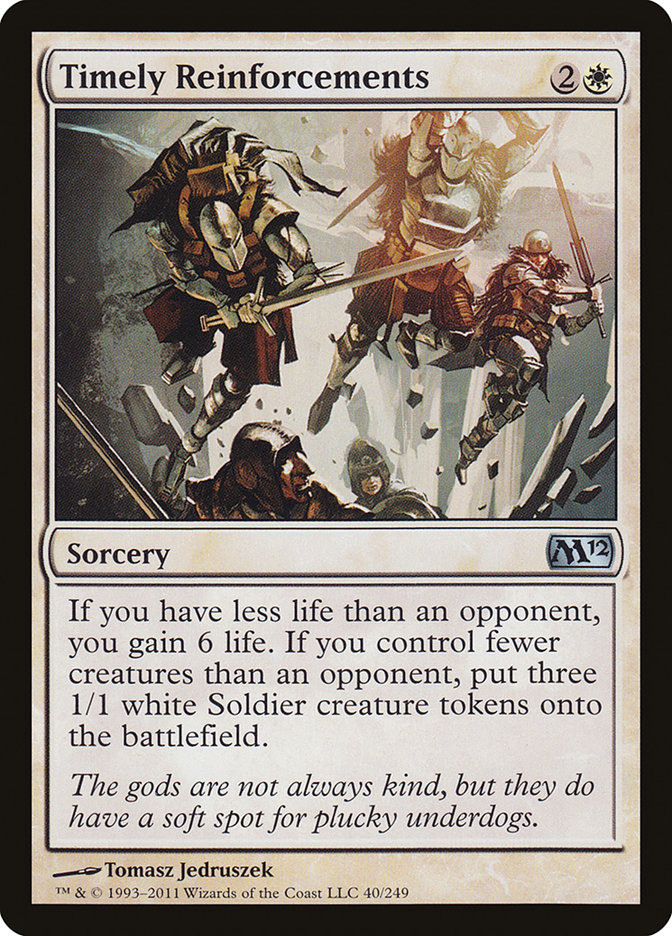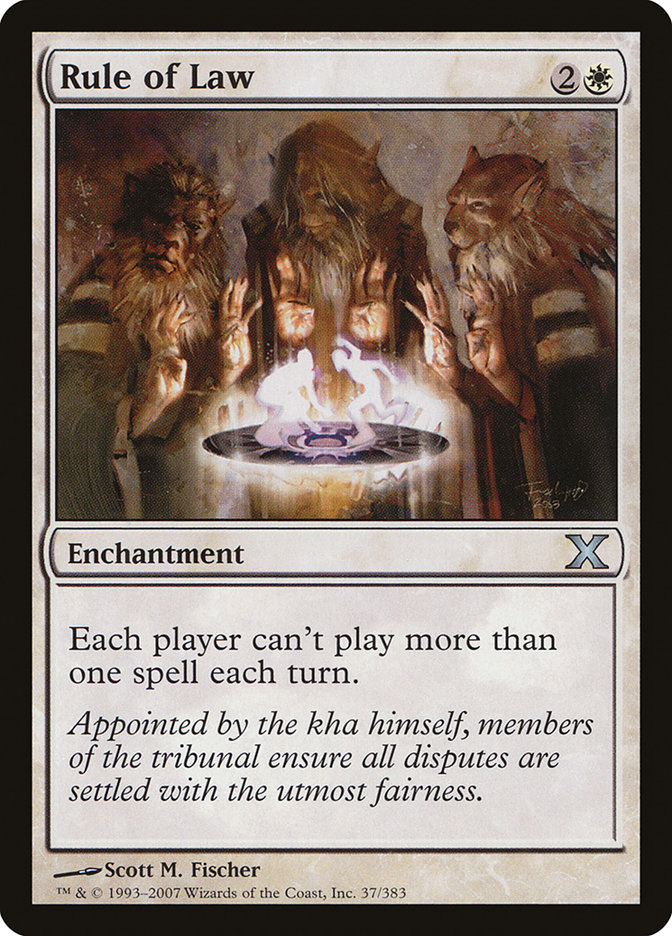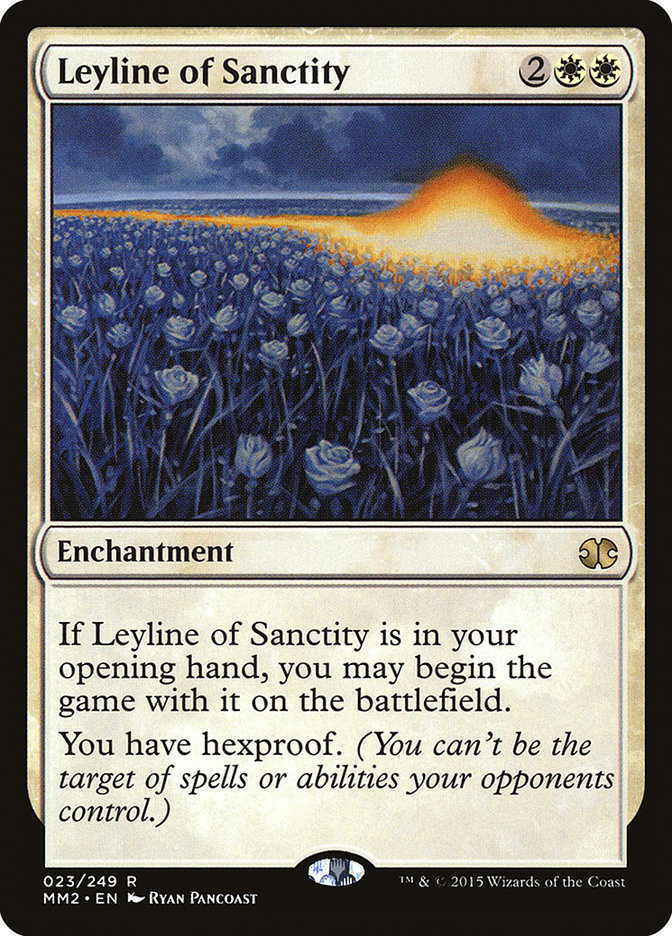One of the things that has baffled Pros for years is how to get ahead of the Modern metagame. There are many decks, many different angles of attack, and many good cards. How can you get ahead of everything? We have often seen players of a niche archetype spike an Open or Grand Prix where the stars align for their deck, but it isn’t arbitrary. You can predict what general plans will work and what won’t.
This is how to think about the format to try to get a leg up on where it is and where it is going.
The Phases of Modern
Phase 1: Classic Modern
Everyone plays whatever they want. There’s maybe a best deck, but no one really cares. At most you have one deck at about seven percent of the metagame, and who knows past that.
The only thing you are looking for at this level is broad-spectrum power. Do not, I repeat, do not show up with something like Think Twice or basic Plains in your deck. You play against fourteen different decks (two people will always play Thoughtseize and threats) and get smashed by five of them. You want all of the free wins your deck can give you, because things like “planning for matchups” are not going to reliably pay off.
One thing worth noting: in the past, this metagame state has popped up just because of time elapsed between events. If the last major Modern event was more than a month ago and there isn’t an obvious best deck hanging over the format in the meantime, this is where the metagame is.
Phase 2: Things Condense
A best deck is discovered. It starts winning a lot. People are still showing up to events
I’m going to be blunt: at this stage you should not be trying to brew. Doing cool stuff is going to suck. Either you are going to be too focused on beating the Death’s Shadow or Eldrazi deck and just lose to the other 80% of the field, or not focused enough and lose Round 13 to them. Or, worse, lose in a PPTQ Top 8.
Save that desire to do cool things for later and just ride the wave of success.
This was Modern between February and June. Death’s Shadow just had a hard lock on the format, with Eldrazi Tron in second place. Playing something else was not a very good idea.
Level 3: Things Congeal
At some point, literally everyone figures it out. There’s a Death’s Shadow, an Eldrazi Tron trying to compete with it, and maybe another couple of decks hanging on at the top tables. The Abzans or Dredges that people were playing before that are still… just okay.
This is when you are going to start trying to win with cool stuff again. Aim hard for the top decks. Disregard almost anything else. The majority of the time your deck should be functional enough to handle “the field” fairly well. It’s Modern; there are basically a million cards in the format. Putting actively bad ones in your deck is difficult.
Okay, maybe you can play some really bad cards, but they aren’t actively bad in the deck you play them in.
This is the phase kicked off by Brian Coval’s Invitational win that is just now wrapping up.
Creatures (29)
- 1 Weathered Wayfarer
- 1 Serra Avenger
- 4 Flickerwisp
- 4 Leonin Arbiter
- 2 Mirran Crusader
- 1 Phyrexian Revoker
- 4 Blade Splicer
- 4 Thalia, Guardian of Thraben
- 4 Restoration Angel
- 4 Thraben Inspector
Lands (23)
Spells (8)

Decks that look horrible in the abstract are winning because they beat Death’s Shadow and Eldrazi Tron. Brian Coval also deliberately chose the Blade Splicer / Restoration Angel high-end over Thought-Knot Seers or other options because it excelled against Death’s Shadow. Don’t be afraid to really skew your decks to make a good core engine work when the typical other 30 cards in the deck don’t line up quite as well.
The concern that often comes up whenever people start talking about playing one of these targeted, out-there decks is “But what about this random deck? People love it, and I’m going to lose to it if I play against it in the first couple of rounds.” Burn is the most commonly referenced deck here, because for some reason “Red Deck You” is a pervasive identity.
Great. Whatever.
Almost no random deck in Modern is enough of the metagame to deliberately care about facing it early on. Maybe the top five decks are important enough, but why are you showing up with a metagamed deck that doesn’t handle those?
Maybe that 5-7% of the time you play against Burn or whatever in the first three rounds before it starts losing to Death’s Shadow. That sucks; you lose a round. You know what happens if you compromise your positioning against the top decks? You show up, you start 6-3 and barely make Day 2, and then you win some, you lose some, and go home with a 9-6 or 10-5 finish.
Magic is not a game where you are trying to finish in 104th place. “First and nine dead lasts” is way better than ten finishes where you Day 2 and don’t go anywhere.
There are two exceptions to this, where giving in to the fear might be okay.
The first is when you are unsure if the best decks are saturated enough to target. Maybe you think it’s time to move to this phase, but really you are a phase back and should just be playing that best deck. There’s nothing wrong with conceding that you aren’t confident in your attempt to level the metagame and defaulting to the known best deck that still gives you a good chance at a top finish. Just don’t use this as an excuse to play something else wild that doesn’t actually fit the “beats the best decks” goal. A single failure in exploring new options doesn’t mean you have to throw away all reasoning.
The second is if you realize the random deck you are afraid of also is good against the best decks. In that case, you should evaluate if that deck is strictly better-positioned than your current weapon of choice. Again, there’s nothing wrong with being wrong with your first guess, but making a worse choice because you weren’t willing to think about something else being better is definitely wrong.
Phase 4: Beating the Weirdos
Now everyone is starting to play these metagamed decks. Your best deck is still there but is now suppressed. It isn’t half of the Top 8 and is down a couple of percentage points at all of the earlier checkpoints.
Modern is approximately here right now. Death’s Shadow and Eldrazi Tron win a lot, but decks like G/W Company or Death and Taxes are making a stand. As a write this, Mono-White Martyr is literally 9-0 at #SCGRICH, having won against another rising deck in G/R TitanShift.
Everyone is playing random decks that try to beat that one big deck. Importantly, they are compromising their natural power level for cards that line up well against one or two specific matchups.
Just jam on them. Get under them with one of the consistent, raw power options of the format. Note that this is the same end solution as in Phase 1, but there’s a twist. There are likely one or two known limits on the format that are more common than the rest. Chalice of the Void; Thalia, Guardian of Thraben; and Stubborn Denial are the cards they show up with now. Play the best deck that doesn’t fold to those.
We saw four Storm decks show up in the Top 16 of #SCGNY, and that probably isn’t even the best combo deck in the overlap between “fast enough to beat metagamed decks” and “doesn’t auto-lose to Chalice of the Void.” I think Ross Merriam is right on point with his choice of Elves this weekend. While it may look like a deck that loses to Chalice of the Void and possibly Walking Ballista, I would like to provide a counter-argument: win the die roll, cast Collected Company, and maybe just find your Reclamation Sage on time.
And then we begin the loop. Re-leveling all of the exploit decks just branches in too many directions to follow. People still mostly play the best deck, but it’s not prevalent or winning enough to really focus on. Congrats, you’ve executed one full loop of the Modern metagame.
Exploiting the Metagame
In those more defined Modern formats, how do you decide which direction to look for your off-the-radar deck?
Look to the answers everyone else is playing. Or look at the answers available to you and mirror the discussion.
No Answers
This was the format circa Gitaxian Probe. Infect had basically no interaction, and the old Death’s Shadow Aggro deck had some at best.
The key in these formats is to play slightly more interaction than your opponents but still kill swiftly. Back when Splinter Twin was legal, it played this role perfectly to the point where it drove many of the non-interactive decks out of the format.
These days, I would look towards Gifts Storm as the deck to play this role. The default Remands are pretty strong to start with, and the core combo of castings Gifts Ungiven with a cost reducer is card-light enough that you can afford more Dispels or Lightning Bolts than traditional Storm decks. Blue Scapeshift might fill the role, but in the past, my non-interactive decks have demolished that deck by just being too fast. There’s this key gap to bridge of your removal letting you survive or position just long enough to win instead, and Scapeshift doesn’t capitalize on that. Not to mention, once the “faster” deck adds a couple of Dispels or Thoughtseizes, they just become better at doing everything and your whole plan falls apart.
Cheap Removal
Fatal Push basically redefined what cheap removal is in Modern. While it apparently isn’t the most-played card, it wouldn’t have surprised me if it was.
This is nothing new. For the five years before, Lightning Bolt had to be the most-played card at almost all points. The way you approach a format flooded with good cheap spot removal is the same regardless of what it is. Just play cards that don’t get blown out by it.
Talking about the whole “don’t play creatures” response isn’t interesting, so let’s talk about creatures. Losing a two-drop kinda sucks, but it’s not the end of the world unless your deck leans on it like Devoted Druid. What you can never afford is losing your three- or four-drop in a clean trade. With Lightning Bolt, that was the x/4 test, but with Fatal Push, there’s a weird gap. They can have a fetchland for revolt, but it’s not assured. You don’t need immediate value like Tireless Tracker to flip the interaction, just almost-immediate value like Knight of the Reliquary. You need to be able to punish them for missing the revolt level-up for a turn.
Path to Exile is a bit of the reverse. Instead of caring about what dies to it, you care about what happens once something does die to it. You need ways to exploit the extra mana. Collected Company is the best high-drop Path jumps you towards right now, but plenty of others exist. On a tactical level, you can sideboard out a land against decks that will be forced to Path down your early threats.
It will never happen, but the absence of cheap removal in the format implies you should shove on the fastest all-in creature combo possible. This likely means Glistener Elf, but maybe one of Gerry’s notebooks has a sick Nivmagus Elemental build hanging around.
Big Removal
The one thing to watch with the bigger removal spells is what they miss. Is everyone playing Terminate, making protection from red a game-changer? Are they playing Go for the Throat that doesn’t kill Wurmcoil Engine or Arcbound Ravager?
Right now, the gap is “everything but creatures.” We are so worried about killing Gurmag Angler and Endbringer that killing random nonsense like Jeskai Ascendancy is not easy. I was recently asked about Solemnity plus Phyrexian Unlife as a viable combo for the format, and while I don’t know if it is good enough on power level, it is in the right place at the right time now. Check out Shaun McLaren’s videos from last week for a more informative opinion on that.
Wide Removal
How does your opponent handle multiple threats in a short timeframe?
Wide removal has been becoming less and less prevalent recently, largely due to the shift in Tron base colors from traditional G/R with Pyroclasm to G/B with Fatal Push. Or maybe I have cause and effect backwards, with Death’s Shadow and Thought-Knot Seer pushing for heavier-hitting removal. Or maybe the real cause is the previous midrange decks turning into Death’s Shadow decks and cutting all their cards that cost real mana, including sweepers.
Regardless, this is just you looking for a window to play your creature decks. If you can name your deck by a creature type or are playing Aether Vial, odds are these are the most important cards to look for in other people’s lists. If you see a bunch of sweepers across the format, don’t play any of these decks. There are some small guessing games with cards like Wild Nacatl threading the sizing and speed needle against Pyroclasm and Damnation but folding to Engineered Explosives and Anger of the Gods, but that kinda involves a one-mana 3/3 being a good deal in a format of one mana 4/5s and 7/7s.
If you are attacking with anything that trades with it, you are making Snapcaster Mage into a wide removal spell. This is why the G/R Bushwhacker deck failed. It was great on tempo but got full-blown two-for-oned by Eternal Witness and Snapcaster Mage recurring removal.
Pre-Resolution Answers
Countermagic is actually pretty bad in Modern. It does two things well: it beats up on four-drop threats like Nahiri, the Harbinger and beats up on true combo if they don’t pack a bunch of Dispels or Pact of Negations to go under it. Basically, don’t play those if countermagic is prevalent, and even if it isn’t, make sure they are actually good first before doing so.
There isn’t a lot you can do to really mitigate Thoughtseize. It just does its thing of making your hand worse than if you have mulliganed it. The only thing to note is that the balance of Thoughtseize versus Inquisition of Kozilek indicates whether certain combo decks actually stand a chance. Decks that struggle to find a single component like Ad Nauseam are going to fail when Thoughtseize is abundant to take their key card. On the more fringe side of things, various Hive Mind and Through the Breach lists suffer similar fates due to their key card being irreplaceable.
The Hate Cards
Outside of all of this nonsense, there are two other subgames going on with Affinity and Dredge. If there is a weekend where people appear to be cutting their hate, you want to be playing the deck to exploit that.
If it were just whether you can beat Affinity and Dredge, this wouldn’t be an interesting discussion. The truly interesting discussion is how attacking those deck results in splash damage towards other decks like Lantern Control or Living End. There will be weeks where the basic gameplan of Dredge or Affinity just isn’t good. For example, Affinity is not inherently good against Lingering Souls decks regardless of hate density because a swarm of 1/1 fliers with some removal holds off everything but Etched Champion. That week might be a great week for Lantern Control or the even wilder Krark-Clan Ironworks deck.
As I said last week: either cut Dredge hate one weekend before everyone else does or leave it in your sideboard one weekend longer. (The same goes for Affinity.) The secondary point is that if you are trying to chase the Modern metagame, having a laundry list of the true artifact and graveyard decks is important. The default one might not be the best one to win on a given hate-free week.
Smaller versions of this subgame also exist for Burn, Storm, and probably some other decks I’m forgetting exist. Those strategies are less powerful and have less overlap with other archetypes, so it is less worth constantly tracking it and more just know they exist so you can flag when it’s time to play those decks.
There are a large number of hate effects that are less linear in their applications. Building around the known ones is the easy part. Knowing the clusters they impact so you can play the one that breaks the format is the hard part and honestly an article of its own.
…..And More
Honestly, to say this is 100% comprehensive would be a lie. The big omission is I can’t quite figure out the right way to describe how to predict when to move in on or prepare for the various big mana decks like Tron or Scapeshift. The old adage of beating up on midrange with them isn’t quite as true when “midrange” is Death’s Shadow and Stubborn Denial, but TitanShift is winning and I don’t quite know how to say why.
I’m also ignoring a lot of external factors. The major one is just experience. With so many decks, there are way too many decks and matchups in Modern to assume that picking something up from scratch will pan out. The general rule is that showing up with a deck you haven’t invested a solid amount of time in isn’t going to work, but I almost think the opposite is true in the long run. By sticking to your comfort zone, you are locking yourself into the same deck decisions in the future instead of building your knowledge base.
There’s eventual value to being the expert of your deck, but there’s more to being the expert of the format. Don’t be afraid to try a lot of different things. You will learn transferable skills for later choices, and the worst-case scenario might be that you actually like it.


